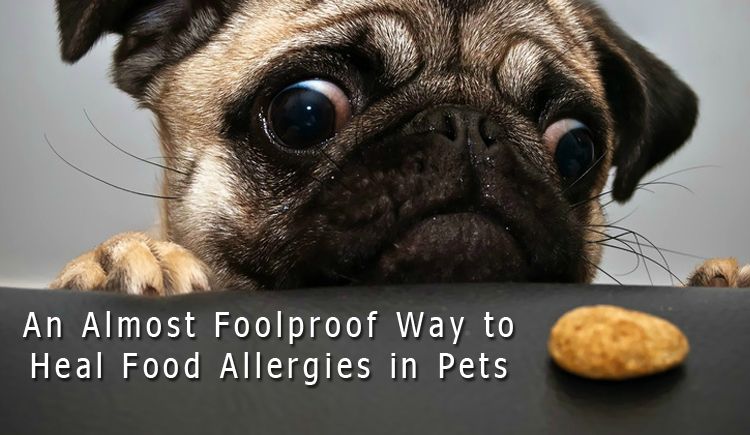As a pet owner, you always want the best for your pets and so you get the best quality food products for your pets to meet their nutritional requirements. But still there are times when the pet gets food allergies. Some of the symptoms that the pet shows while going through food allergies include: bald spots, diarrhea, hot spots, inflamed skin, itchy rashes, loose stools, recurrent ear infection, skin problems and vomiting. The worst part of this predicament is that it takes time to comprehend the exact reason for the symptoms shown by the pet. So it is important for you as a pet owner to know what exactly causes food allergies in pets. Let us try to find out the answer:
How food allergies develop in pets?
There has been lots of research conducted on the reasons for developing food allergies in pets and there is some truth in the findings. When food is digested by pets it gets broken into solitary amino acids and nutrients that pass from the GI tract into the bloodstream which then gets absorbed by the pet’s body. The GI tract is a semi-permeable wall that has been developed to soak up the nutrients that have been digested completely, but does not allow partially digested nutrients and other indigestible things eaten by the pet.
GI tract keeps the allergens out while absorbing the nutrients. If the partially digested nutrients go through the GI wall into the blood stream, the immune system of the pet will build up an immense reaction triggered by these foreign bodies. These pets have leaky gut, which results in allergic reaction in pets every time they eat the food that is sensitive to them.
Healing food allergies in pets
If a pet is suffering from food allergies, according to traditional and holistic vets it is important to give him/her a new protein diet to heal the leaky gut of the pet. This is also known as food allergy elimination trial or hypoallergic diet. But always keep this in mind that each and every pet reacts differently to different food at a given point of time. So you can give the pet two types of diet: hydrolyzed soy diets and novel-ingredient diets. Both these diets consist of a solitary protein source and solo carbohydrate source.
Different types of food to be fed during the food allergy elimination trial
Hydrolyzed soy diets consist of a solitary protein source that is particularly processed to break the formation of the proteins like soy, poultry, and liver into multiple, small particles that the immune system of the pet will not identify as an allergen. It also contains corn starch, cellulose, and rice beet pulp as a carbohydrate source.
Novel ingredient diets contain a protein source that has never been given to the pet earlier. This can include: duck, kangaroo, and venison. The carbohydrates in the food contain something different than the usual rice like potatoes or peas.
How long does the food allergy elimination trial need to be continued?
Once the food allergy elimination trial has been commenced continue it for at least 12 weeks. Ensure that the pet does not eat any treats, flavored medications, rawhide or pig’s ears except for the special diet and water.
Precautions to be taken after completion of food allergy elimination trial
After the food trial you may find the ingredient that is causing allergies in the pet. Just avoid that ingredient. It is recommended to rotate a single protein source for three to four months before giving another novel diet. This is important because if in case food allergy in the pet returns it would be very difficult for you to select the protein source that you have not yet fed to your furry friend. If the symptoms of food allergy return; seek the advice from your veterinarian immediately.
Have you come across situations where your pet got food allergies? How did you resolve the concern? Do write back to us by posting your invaluable comments and we would gladly integrate your story in our upcoming blogs.





